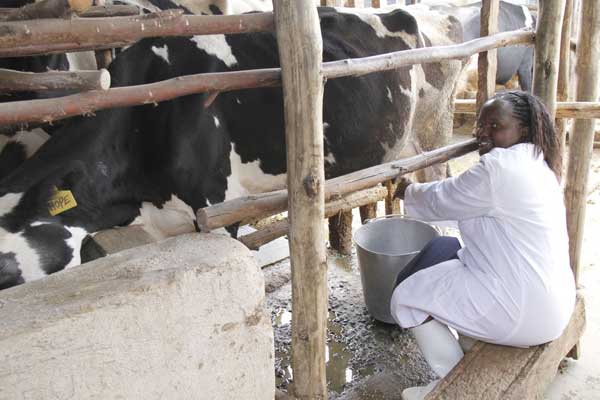Dairy management practices play an important role in what a farmer gets.
They involve housing, disease and pest control, regulation of temperatures, milking and weaning.
Once such a practice is ‘once-a-day milking’, which is gaining ground in Europe, Australia and America.
The practice involves milking cows or goats once a day as opposed to the usual twice or even thrice.
For a farmer whose main priority is production of more milk, once-a-day milking may sound absurd.
Studies, however, show that the practice has several benefits that far outweigh disadvantages and that the marginal reduction in production can be accommodated.
EASES PRESSURE
By milking once-a-day, the animal is able to optimally produce a substantial amount of milk from minimal feeds. This eases undue pressure on both the animal and the farmer.
During the first four to seven months of once-a-day milking, the total milk production per day may fall by up to 30 per cent. This, however, stabilises to 10 per cent below the original twice-a-day.
With time, the animal gets used to producing as much milk without having to be fed more.
For any business, it does not make sense when production is high and the expenditures are also high. If executed well, once-a-day milking ultimately not only makes sense but also lots of cents.
Another factor closely related to availability of feeds is the condition of the cow or goat. Milking the animal many times may wear it out and, thus, the desired milk output will not be achieved.
Research shows that cows and goats milked once-a-day have better energy than those milked twice-a-day or more.
Over-milked animals tend to have low weight at drying off in readiness for insemination, which affects fertility rate.
Low conception rate has a cost implication to the farmer not only in relation to the inevitable repeat of insemination services but also in terms of lost time and opportunities.
Additionally, the farmer will need to invest heavily on high-quality feeds when the cow is in-calf to ensure it is in the requisite condition at calving.
Good condition of the cow is better than the short-lived ‘high’ milk yields obtained by milking more than once-a-day.
Once-a-day milking also reduces the cost of labour. Besides, the farm workers have adequate time to do other chores to enhance the welfare of the livestock. Remember if your workers are or feel overworked, they may end up doing a shoddy job resulting in losses.
How does a farmer make the switch to once-a-day milking? The first thing is to change the mindset. Most farmers are so used to twice-a-day milking that switching may pose a challenge.
The initial dip in production may also frighten some farmers back to twice-a-day milking. Consistency, however, is of essence.
After making the decision, the farmer needs to decide on a schedule appropriate to them. You choose to either do your milking in the morning or in the evening. Choose what best suits your farm needs.








